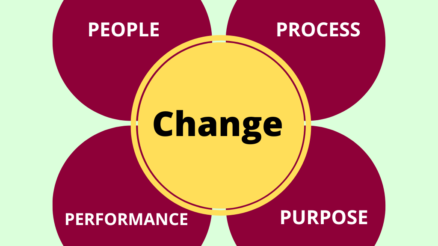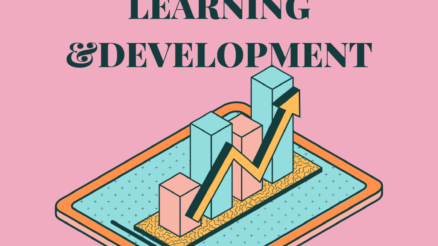Ever wondered how diverse groups of individuals collaboratively contribute to a wide array of projects?
Whether it is creative tasks or scientific work, the phenomenon of crowdsourcing help us in finding out unique solutions of our challenges.
Crowdsourcing is like using the knowledge of a big group of people to make cool ideas and solve problems in different industries.
This blog post aims to unravel the mysteries behind this phenomenon and answer the pivotal question: how does crowdsourcing work?
Whether you’re a junior or a seasoned professional, this exploration will shed light on the fascinating world of crowdsourcing and its profound impact on shaping the future.
Let’s check it out
Definition of Crowdsourcing
Crowdsourcing is a decentralized and collaborative problem-solving or content creation approach that leverages the collective intelligence, skills, and efforts of a large and diverse group of individuals, often referred to as the “crowd.”
This innovative method involves outsourcing tasks, traditionally performed by individuals or designated groups, to a broader audience, typically facilitated through online platforms.
The concept embraces the idea that a diverse and collective group can generate solutions, ideas, or content more efficiently and creatively than a single individual or a centralized group.
Crowdsourcing spans various fields, from idea generation and data analysis to design, innovation, and funding, fostering a collaborative environment that harnesses the power of the crowd to achieve remarkable outcomes.
Crowdsourcing is not a perfect strategy and has its own advantages and disadvantages.
Evolution and Growth of Crowdsourcing
Over the years, this collaborative approach has undergone a remarkable journey, adapting to the changing landscape of technology, connectivity, and global collaboration.
At its early stage, crowdsourcing was primarily an organic process as communities used to come together to share ideas and contribute to projects informally.
However, the digital revolution and the rise of the internet played a pivotal role in accelerating the concept’s evolution.
Online platforms emerged as virtual hubs, connecting a diverse range of individuals with varied skills and expertise.
The early 2000s witnessed the formalization of crowdsourcing platforms, marking a turning point in the concept’s growth.
Companies and organizations began recognizing the potential of tapping into the collective intelligence of the crowd for tasks ranging from simple data entry to complex problem-solving.
This led to development of dedicated crowdsourcing platforms and tools that made collaboration more accessible on a global scale.
From open-source software development to scientific research and creative endeavors, crowdsourcing proved its versatility in generating innovative solutions and content.
As success stories got the attention and more industries embraced the concept.
In recent years, the integration of artificial intelligence and machine learning has further contributed to the evolution of crowdsourcing.
These technologies enhance the efficiency of tasks, automate processes, and provide more personalized and targeted solutions.
The growth of blockchain technology has also introduced new possibilities for transparent and secure collaboration in crowdsourcing initiatives.
Looking ahead, the evolution of crowdsourcing continues as it intersects with emerging technologies, industry-specific applications, and the evolving needs of a globalized society.
Importance and Impact of Crowdsourcing in Various Industries
The importance and impact of crowdsourcing is visible across a multitude of industries, reshaping traditional paradigms and catalyzing innovation in unprecedented ways.
This collaborative approach has become a driving force behind transformative change, offering unique advantages that extend beyond conventional methods.
Here’s a closer look at how crowdsourcing make impact on various industries.
Technology and Software Development:
Crowdsourcing has revolutionized open-source software development, enabling a global community of developers to collaboratively create and enhance software solutions.
Bug identification, feature development, and testing benefit from the diverse skills and perspectives brought forth by a crowd of contributors.
Marketing and Design:
In the realm of marketing and design, crowdsourcing provides businesses with a cost-effective means to acquire creative content, such as logos, branding elements, and marketing collateral.
Companies tap into the collective creativity of the crowd to generate innovative ideas and visually appealing designs, ensuring a diverse range of options.
Research and Development:
Scientific research and experimentation benefit from the collective intelligence of diverse minds. Crowdsourcing accelerates data analysis, problem-solving, and hypothesis testing in fields such as biology, chemistry, and astronomy.
The distributed nature of crowdsourcing allows for large-scale data collection and processing, facilitating breakthroughs in various scientific domains.
Healthcare and Biotechnology:
Crowdsourcing contributes to medical research by engaging participants in tasks like protein folding simulations (e.g., Foldit), accelerating the discovery of potential drug candidates.
Patients and healthcare professionals collaborate on platforms to share insights, contribute to medical knowledge, and collectively address challenges in patient care.
Entertainment and Content Creation:
Film, music, and gaming industries leverage crowdsourcing for creative input and content generation. Crowd-driven competitions can unearth new talent and innovative ideas.
Platforms like Kickstarter have transformed funding models for creative projects, allowing artists and creators to directly connect with their audience.
Education:
Crowdsourcing enhances educational resources through collaborative content creation and peer-to-peer learning platforms.
Massive Open Online Courses (MOOCs) and collaborative knowledge-sharing initiatives leverage crowdsourcing to provide accessible and diverse educational content.
Urban Planning and Smart Cities:
Cities utilize crowdsourcing for urban planning initiatives, gathering public input on civic projects, infrastructure development, and community engagement.
Smart city initiatives leverage crowd-contributed data for real-time insights into traffic patterns, environmental monitoring, and public services.
Different Types of Crowdsourcing
There are different types of crowdsourcing. Each of type has unique characteristics and applied in different situation to meet specific objectives.
Given below are explanation of different types of crowdsourcing:
Micro-tasking:
Micro-tasking involves breaking down larger tasks into small, manageable units that can be distributed to a large number of contributors.
Example: Amazon Mechanical Turk is a platform where individuals can perform microtasks, such as data annotation, image labelling, or small data entry tasks.
Crowdfunding:
Crowdfunding involves raising funds for a project or venture by collecting small contributions from a large number of people, typically through online platforms.
Example: Kickstarter and Indiegogo are popular crowdfunding platforms where creators can pitch their ideas, and individuals can contribute financially to support the projects they find interesting.
Idea Generation:
This type involves sourcing creative ideas, solutions, or suggestions from a diverse crowd to address specific challenges or foster innovation.
Idea competitions and innovation challenges where companies or organizations invite the public to submit ideas for product improvements, new features, or solving particular problems.
Data Collection and Analysis:
Crowdsourcing is used for gathering and analyzing large sets of data, often requiring human input for tasks like image recognition, sentiment analysis, or data validation.
Crowdsourced mapping projects like OpenStreetMap, where volunteers contribute geographical information, or platforms like Kaggle, where data scientists collaborate on solving complex problems.
Crowdsourced Content Creation:
Involves generating content, such as writing, graphic design, or multimedia, by sourcing contributions from a diverse group of individuals.
Wikipedia relies on crowdsourced content creation, where volunteers worldwide contribute articles and edits to create a comprehensive and constantly evolving encyclopaedia.
Citizen Science:
Citizen Science engages the public in scientific research, allowing individuals to participate in data collection, observation, or analysis to contribute to scientific knowledge.
Projects like eBird, where bird watchers contribute sightings to a global database, or Foldit, a game where players help solve complex scientific problems related to protein folding.
Open Innovation Challenges:
Companies or organizations pose challenges to the public, seeking innovative solutions or ideas, often with rewards or recognition for successful contributions.
NASA’s Centennial Challenges invite the public to solve engineering problems, offering prizes for ground breaking solutions.
Understanding these various types of crowdsourcing allows businesses, organizations, and individuals to choose the approach that best aligns with their goals, whether it’s solving complex problems, generating creative content, or harnessing collective intelligence for innovation.
How does Crowdsourcing work?
Here’s a step-by-step breakdown of how crowdsourcing works:
1. Define the Objective:
Before initiating a crowdsourcing effort, it’s crucial to clearly define the objective or problem that needs solving. Whether it’s idea generation, data analysis, content creation, or problem-solving, a well-defined objective sets the stage for a successful crowdsourcing campaign.
2. Choose the Crowdsourcing Type:
Depending on the nature of the task or project, select the appropriate type of crowdsourcing. This could be micro-tasking for small, discrete tasks, crowdfunding for fundraising, or idea generation for creative initiatives.
3. Select a Platform:
Utilize online platforms or tools designed for crowdsourcing. These platforms act as intermediaries, connecting those seeking solutions with a pool of potential contributors. Examples include Amazon Mechanical Turk for microtasking, Kickstarter for crowdfunding, or InnoCentive for open innovation challenges.
4. Create a Clear Call to Action:
Craft a compelling call to action or project description that clearly communicates the task, goals, and any specific guidelines or requirements. This ensures that contributors understand the context and expectations of the crowdsourcing effort.
5. Open the Task to the Crowd:
Launch the crowdsourcing campaign, making the task or project accessible to a broad audience. This may involve posting it on relevant platforms, sharing it through social media, or reaching out to specific communities that might have an interest or expertise in the subject matter.
6. Collect Contributions:
Allow contributors from the crowd to submit their contributions. This could involve submitting ideas, completing microtasks, providing data, or participating in other ways depending on the nature of the crowdsourcing initiative.
7. Evaluate and Curate Submissions:
Evaluate the contributions received. Depending on the crowdsourcing type, this could involve selecting the best ideas, validating data accuracy, or curating content. In some cases, automated algorithms or community-driven voting systems help identify the most valuable contributions.
8. Reward and Recognition (if applicable):
Provide incentives or recognition to contributors, especially if the crowdsourcing effort involves a competitive element or if the contributions lead to tangible outcomes. Recognition can range from monetary rewards to acknowledgment in a publication.
9. Implement the Results:
Integrate the collected contributions or solutions into the larger project or decision-making process. For example, if it’s a product design challenge, implement the winning design. If it’s data analysis, use the insights gained from the crowd-contributed data.
10. Feedback and Iteration (optional):
Consider providing feedback to contributors, fostering a sense of community and continuous improvement. In some cases, crowdsourcing efforts are iterative, with feedback leading to refined tasks or future collaboration.
Challenges and Risks of Crowdsourcing
Addressing these challenges requires a thoughtful approach that integrates clear guidelines, effective communication strategies, and the incorporation of technological solutions.
As the field of crowdsourcing continues to evolve, ongoing efforts to refine best practices and mitigate risks are essential for ensuring the success and sustainability of collaborative initiatives.
Quality Control
Crowdsourcing inherently introduces challenges related to maintaining quality standards. As tasks are distributed across a diverse and often anonymous crowd, ensuring the accuracy and reliability of contributions becomes crucial.
Quality control issues may arise due to varying skill levels, differing interpretations of task instructions, or even intentional misinformation.
Implementing effective mechanisms for reviewing, validating, and filtering contributions is essential to mitigate the risk of subpar or inaccurate outcomes.
Intellectual Property Concerns
The collaborative nature of crowdsourcing raises significant intellectual property (IP) considerations.
Contributors may inadvertently or intentionally submit content that infringes on existing copyrights or patents.
Additionally, determining ownership of collectively generated ideas or innovations can be complex. Clear communication and well-defined terms of use on crowdsourcing platforms are vital to address IP concerns, specifying ownership, usage rights, and any potential compensation for contributors.
Managing Large-Scale Participation
While the scalability of crowdsourcing is a key strength, managing large-scale participation presents challenges.
Coordinating and overseeing a vast number of contributors can lead to logistical issues, including communication breakdowns, delays, and difficulties in maintaining a cohesive workflow.
Effective project management, communication strategies, and the use of appropriate technological tools are essential to address the complexities associated with orchestrating large-scale crowdsourcing initiatives.
Privacy and Ethical Considerations
Crowdsourcing involves the collection and processing of data, which raises privacy and ethical concerns.
Contributors may unwittingly share sensitive information, and managing the ethical implications of how this data is used is crucial.
Transparent communication about data handling practices, obtaining informed consent, and implementing robust security measures are vital to protect the privacy of individuals participating in crowdsourcing projects.
Ethical considerations also extend to issues such as fair compensation, avoiding exploitation, and ensuring a positive and respectful community environment.
Future Trends in Crowdsourcing
Due to the advancement of technology, crowdsourcing has been evolving rapidly.
Let’s discuss here what will be the future trends in crowdsourcing and how it will be managed.
Artificial Intelligence Integration
The future of crowdsourcing is closely intertwined with advancements in artificial intelligence (AI).
AI integration is expected to enhance the efficiency, scalability, and overall capabilities of crowdsourcing platforms.
Machine learning algorithms can assist in automating task allocation, improving the matching of tasks to contributors, and even enhancing the quality control process by identifying patterns and anomalies in contributions.
Additionally, AI technologies can facilitate the analysis of large datasets, providing more sophisticated insights and accelerating the pace of problem-solving in various crowdsourcing domains.
Blockchain Technology in Crowdsourcing
Blockchain technology is poised to revolutionize crowdsourcing by addressing key challenges such as trust, transparency, and intellectual property.
Blockchain offers a decentralized and secure ledger, ensuring the integrity of transactions and the traceability of contributions.
Smart contracts on blockchain platforms can automate reward distribution, ensuring fair compensation for contributors.
Moreover, the immutability of blockchain records can enhance the protection of intellectual property by providing a transparent and tamper-proof record of ownership.
The integration of blockchain is expected to bring increased trust and accountability to the crowdsourcing ecosystem.
Continued Growth in Industry-Specific Crowdsourcing
As crowdsourcing matures, there is a trend toward more industry-specific applications.
Rather than generic platforms, we are likely to witness the emergence of specialized crowdsourcing ecosystems tailored to the unique needs of particular sectors.
For instance, healthcare may see the rise of crowdsourcing platforms specifically designed for medical research and patient engagement, while the manufacturing industry might adopt crowdsourcing for collaborative product design and innovation.
This shift toward industry-specific crowdsourcing allows for more targeted and efficient collaboration, addressing domain-specific challenges and fostering innovation in niche areas.
The convergence of these trends is expected to shape the future landscape of crowdsourcing, making it more intelligent, secure, and tailored to the diverse needs of industries.
As technology continues to advance, the potential for innovative applications of crowdsourcing across various domains is likely to expand, contributing to the continued evolution and widespread adoption of this collaborative approach.
Final Words
Crowdsourcing is like a big team of people working together to solve problems and create cool things. Before using this concept for ideas generation, it’s important to understand how crowdsourcing work? The future looks exciting with new technologies like artificial intelligence making crowdsourcing even better. So, let’s keep collaborating and making awesome things happen!



